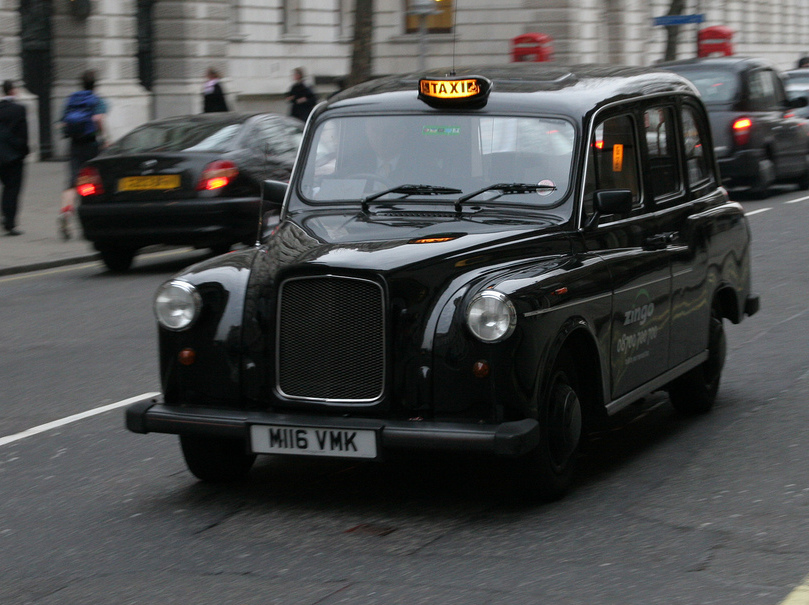Cab Guards For Pickup Trucks: Your Comprehensive Guide to Safety, Utility, and Style pickup.truckstrend.com
The modern pickup truck is more than just a vehicle; it’s a versatile tool, a mobile office, a weekend warrior, and often, a cherished possession. Whether hauling lumber, transporting tools, or embarking on an outdoor adventure, pickup trucks are designed to tackle demanding tasks. However, with great utility comes the need for great protection, especially for the cab and its occupants. This is where cab guards for pickup trucks come into play.
Often referred to as headache racks, back racks, or truck racks, cab guards are essential accessories designed to shield the rear window and cab of a pickup truck from potential damage caused by shifting cargo. Beyond their primary safety function, they offer a host of other benefits, transforming a standard truck into a more secure, functional, and visually striking machine. In this comprehensive guide, we’ll delve into everything you need to know about cab guards, from their core purpose and diverse types to installation insights and practical considerations, ensuring you make an informed decision for your truck.
Cab Guards For Pickup Trucks: Your Comprehensive Guide to Safety, Utility, and Style
What Exactly Are Cab Guards? The Unsung Hero of Truck Safety
At its core, a cab guard is a protective barrier installed directly behind the rear window of a pickup truck, typically mounted to the bed rails. Constructed from robust materials like steel or aluminum, their primary mission is to prevent objects loaded in the truck bed – such as lumber, pipes, tools, or equipment – from sliding forward during sudden stops, collisions, or aggressive maneuvers and shattering the rear window or intruding into the cab.
While often synonymous with "headache racks" (a testament to their ability to prevent literal headaches from flying debris), cab guards serve multiple roles. They come in various designs, from full-mesh grilles that offer maximum protection to open-frame structures designed more for vertical cargo management. Their robust construction and strategic positioning make them an indispensable accessory for anyone who regularly carries cargo in their truck bed, from professional contractors to weekend DIY enthusiasts and outdoor adventurers.
The Indispensable Benefits of Installing a Cab Guard
Investing in a cab guard is an investment in safety, functionality, and even aesthetics. Here’s a breakdown of the key advantages:
1. Uncompromised Safety and Protection
This is the foremost benefit. Imagine a heavy piece of equipment or a bundle of lumber shifting forward unexpectedly. Without a cab guard, your rear window is highly vulnerable to shattering, and more critically, the occupants of the cab are at risk of serious injury. A cab guard acts as a robust shield, absorbing impact and preventing dangerous projectiles from entering the cabin. It protects not just the glass, but the structural integrity of your truck’s cab itself.
2. Enhanced Cargo Management and Security

Cab guards aren’t just for protection; they’re also invaluable for organization. Many designs incorporate multiple tie-down points, offering additional securement options for irregularly shaped or oversized loads that might otherwise be difficult to strap down effectively. Furthermore, some models extend above the cab, providing an elevated platform for transporting longer items like ladders, pipes, or kayaks, keeping them secure and preventing them from dragging on the ground or obstructing rear visibility.
3. Versatile Accessory Mounting Platform
For many truck owners, a cab guard doubles as a convenient mounting point for various accessories. This includes:
- Auxiliary Lighting: Off-road lights, work lights, or amber warning lights can be easily mounted, improving visibility during nighttime operations or in low-light conditions.
- Antennas: CB radio antennas or other communication equipment can be securely mounted at an optimal height.
- Tool Holders: Some designs allow for the attachment of specialized brackets for shovels, rakes, or other long-handled tools.

4. Professional and Rugged Aesthetics
Beyond functionality, a cab guard significantly enhances the visual appeal of a pickup truck. It gives the vehicle a more rugged, robust, and professional appearance, signaling that the truck is ready for serious work or adventure. For businesses, it can convey an image of capability and reliability.

5. Potential for Increased Resale Value
While not a primary driver, a well-maintained truck equipped with a quality cab guard can sometimes command a slightly higher resale value, especially in markets where work trucks are in demand. It suggests that the previous owner took care of the vehicle and equipped it for utility.
Types of Cab Guards: Choosing the Right Shield for Your Ride
Cab guards come in various configurations, each offering distinct features and benefits. Understanding these types is crucial for selecting the best fit for your needs and truck.
1. By Material:
- Steel Cab Guards:
- Pros: Extremely strong, highly durable, excellent impact resistance, often more affordable.
- Cons: Heavier, susceptible to rust if the powder coating is scratched or damaged, can add significant weight to the truck.
- Ideal For: Heavy-duty work, construction, or applications where maximum strength is paramount.
- Aluminum Cab Guards:
- Pros: Lightweight (improves fuel economy slightly, less strain on suspension), naturally corrosion-resistant (won’t rust), sleek appearance.
- Cons: Generally more expensive than steel, may not be as robust as heavy-gauge steel for extreme impacts.
- Ideal For: General use, recreational purposes, or where weight savings and corrosion resistance are priorities.
2. By Design:
- Standard Mesh/Grille Cab Guards:
- Description: Feature a full mesh or gridded pattern across the entire frame.
- Pros: Offers maximum protection against small and large debris, good visibility through the mesh.
- Ideal For: Most general applications, ensuring comprehensive protection.
- Window Cut-Out Cab Guards:
- Description: Designed with an open area directly in front of the rear window.
- Pros: Allows for easier access to the rear window (e.g., for cleaning, reaching items in the bed), can be better for trucks with sliding rear windows.
- Cons: Offers slightly less protection in the cut-out area.
- Ideal For: Users who frequently need rear window access.
- Louvered Cab Guards:
- Description: Features horizontal bars or "louvers" instead of mesh.
- Pros: Provides excellent protection, can offer some shade to the cab interior, unique aesthetic.
- Cons: Can slightly obstruct rear visibility compared to mesh designs.
- Ideal For: Those seeking a distinct look with good protection.
- Open Frame/Ladder Rack Style Cab Guards:
- Description: Minimalist design, focusing on strong vertical and horizontal bars without a full mesh infill. Often part of a larger ladder rack system.
- Pros: Excellent for transporting long items (ladders, pipes), multiple tie-down points, lighter weight than full mesh.
- Cons: Offers less comprehensive protection against smaller, shifting debris directly behind the window.
- Ideal For: Contractors, plumbers, or anyone regularly transporting long, oversized items.
- Integrated Systems: Some manufacturers offer bed racks or complete utility systems that include a cab guard component, providing a unified solution for cargo management.
Key Considerations Before Purchase
Before you make a purchase, careful consideration of several factors will ensure you choose the perfect cab guard for your needs:
- Truck Compatibility: This is paramount. Cab guards are typically designed for specific truck makes, models, and even bed lengths (e.g., Ford F-150 SuperCrew with 5.5′ bed). Ensure the product you select is a precise fit for your vehicle. Verify mounting points and overall dimensions.
- Intended Use: Are you primarily seeking protection from heavy construction materials, or do you need a platform for lights and occasional long loads? Your primary use case will dictate the material and design.
- Visibility: While most cab guards are designed to minimize obstruction, some styles (like heavily louvered or solid plate designs) might impact rear visibility or the effectiveness of your rear-view camera. Consider your comfort level.
- Accessory Needs: If you plan to mount lights, antennas, or other accessories, look for cab guards with pre-drilled holes, integrated wiring channels, or sufficient mounting space.
- Installation Method:
- Bolt-on: Most secure, typically requires drilling into the truck bed rails. Offers maximum strength for heavy loads.
- Clamp-on/No-Drill: Easier installation, uses clamps to secure to the bed rails. Less invasive but may not be as secure for extremely heavy or dynamic loads.
- Budget: Cab guards vary widely in price based on material, brand, and features. Set a realistic budget and prioritize the features most important to you.
- Local Regulations: Check if there are any local laws regarding mounted lights (e.g., color, brightness) or overall vehicle dimensions with the cab guard installed.
Installation: A Step-by-Step Guide (General Overview)
While specific instructions will vary by manufacturer and cab guard model, the general installation process for most bolt-on cab guards involves these steps:
- Preparation: Read the manufacturer’s instructions thoroughly. Gather all necessary tools (wrenches, drill, drill bits, measuring tape, marker, safety glasses).
- Positioning: Carefully place the cab guard onto your truck’s bed rails. Ensure it is centered and properly aligned with the cab.
- Marking Drill Points (for bolt-on): Once positioned, use a marker to precisely mark the drilling locations on the bed rails through the cab guard’s mounting holes. Double-check your measurements.
- Drilling: Remove the cab guard. Using the appropriate drill bit size (as per instructions), carefully drill pilot holes, then the final mounting holes through the bed rails. Be mindful of anything underneath the bed that could be damaged.
- Securing: Re-position the cab guard. Insert the bolts, washers, and nuts provided. Tighten all fasteners securely, following the manufacturer’s torque specifications. For clamp-on models, simply attach the clamps as directed and tighten.
- Accessory Wiring (if applicable): If installing lights or other wired accessories, route the wiring safely and securely, connecting to your truck’s electrical system as per instructions (often requiring a separate wiring harness or professional help).
- Final Check: Once installed, give the cab guard a firm shake to ensure it is rock-solid and rattle-free. Check all bolts for tightness.
Practical Advice: If you’re not comfortable with drilling into your truck or handling electrical wiring, it’s always best to seek professional installation from a reputable truck accessory shop. They have the expertise and tools to ensure a safe and secure fit.
Maintaining Your Cab Guard
A cab guard is built to be tough, but a little maintenance goes a long way in preserving its appearance and functionality:
- Regular Cleaning: Wash your cab guard regularly, especially after off-roading or exposure to road salt. Use mild soap and water.
- Inspect for Damage: Periodically check for any bends, cracks, or signs of wear. Address minor issues before they become major.
- Rust Prevention (Steel): If you have a steel cab guard, promptly touch up any scratches or chips in the powder coating with rust-inhibiting paint to prevent corrosion.
- Check Fasteners: Every few months, re-check all mounting bolts or clamps for tightness. Vibrations from driving can sometimes loosen them over time.
- Address Rattles: If your cab guard starts to rattle, identify the source. It might be loose bolts, or you might need to insert rubber shims at contact points between the guard and the truck bed.
Cab Guards For Pickup Trucks: Price Table
Prices for cab guards can vary significantly based on brand, material, design complexity, and specific truck fitment. The following table provides a general price range in USD.
| Type/Material | Key Features | Typical Price Range (USD) | Notes |
|---|---|---|---|
| Standard Steel Mesh | Heavy-duty protection, robust design | $250 – $600 | Most common, excellent strength, prone to rust if coating damaged. |
| Standard Aluminum Mesh | Lightweight, corrosion-resistant, good protection | $400 – $800 | Higher initial cost, better fuel economy, no rust concerns. |
| Louvered Steel | Unique aesthetic, good protection, some cab shade | $350 – $700 | Can slightly impact rear visibility compared to mesh. |
| Louvered Aluminum | Lightweight, rust-resistant, distinctive look | $500 – $950 | Premium option, combines style with durability. |
| Open Frame/Ladder Rack | Ideal for long loads, multiple tie-down points | $300 – $800 | May offer less direct cab protection; often part of larger systems. |
| Integrated Systems | Cab guard + bed rack, unified cargo solution | $700 – $1500+ | Comprehensive, often custom-fit, highly versatile. |
| Premium/Custom Brands | High-quality finishes, specialized features, brand | $800 – $2000+ | Top-tier durability, advanced designs, often made in the USA. |
Note: Prices are estimates and can fluctuate based on retailer, sales, specific truck model fitment, and additional features like integrated lighting or specialized coatings. Installation costs, if professional, are extra.
Frequently Asked Questions (FAQ) About Cab Guards
Q1: What is a cab guard also known as?
A1: Cab guards are commonly referred to as headache racks, back racks, or truck racks.
Q2: Do I need to drill holes in my truck to install a cab guard?
A2: It depends on the model. Many cab guards are "bolt-on" and require drilling into the truck bed rails for the most secure fit. However, "clamp-on" or "no-drill" options are available that secure to the bed rails without drilling, though they may not be as robust for very heavy loads.
Q3: Will a cab guard block my rear window visibility?
A3: Most well-designed cab guards, especially those with mesh patterns, offer minimal obstruction to rear visibility. Some louvered or solid designs might reduce visibility slightly. It’s important to check the specific design and consider if it impacts your rearview camera’s functionality.
Q4: Can I install lights on a cab guard?
A4: Yes, many cab guards are specifically designed with pre-drilled holes or mounting tabs for auxiliary lights, such as work lights, off-road lights, or warning lights. Some even have integrated wiring channels.
Q5: What’s the main difference between steel and aluminum cab guards?
A5: Steel is generally stronger and more affordable but heavier and susceptible to rust if its protective coating is compromised. Aluminum is lighter, naturally corrosion-resistant, and often more expensive, offering a good strength-to-weight ratio.
Q6: Are cab guards universal, or do I need a specific one for my truck?
A6: Cab guards are generally not universal. They are typically designed for specific truck makes, models, and sometimes even bed sizes to ensure proper fitment, alignment, and secure mounting to the bed rails.
Q7: Does a cab guard affect fuel economy?
A7: Any addition to a vehicle that changes its aerodynamics can theoretically affect fuel economy. However, the impact of a cab guard is usually negligible, especially compared to larger accessories like full bed caps or oversized tires.
Q8: Can I still use a tonneau cover with a cab guard?
A8: It depends on the design of both the cab guard and the tonneau cover. Some cab guards are designed to be compatible with certain roll-up or folding tonneau covers, while others may interfere. It’s crucial to check compatibility before purchasing both.
Conclusion: Fortify Your Fleet, Enhance Your Ride
Cab guards for pickup trucks are far more than just aesthetic enhancements; they are critical safety components that protect your truck’s cab and, more importantly, its occupants from the inherent risks of transporting cargo. From preventing shattered windows to offering versatile mounting points for accessories and streamlining cargo management, the benefits are undeniable.
By understanding the different types, materials, and crucial considerations, you can select a cab guard that perfectly aligns with your truck’s specific needs and your lifestyle. Whether you prioritize heavy-duty protection for demanding work, lightweight versatility for outdoor adventures, or a rugged aesthetic that commands attention, a quality cab guard is an investment that pays dividends in safety, functionality, and peace of mind. Fortify your fleet, enhance your ride, and drive with confidence knowing your truck is equipped with the ultimate shield.


